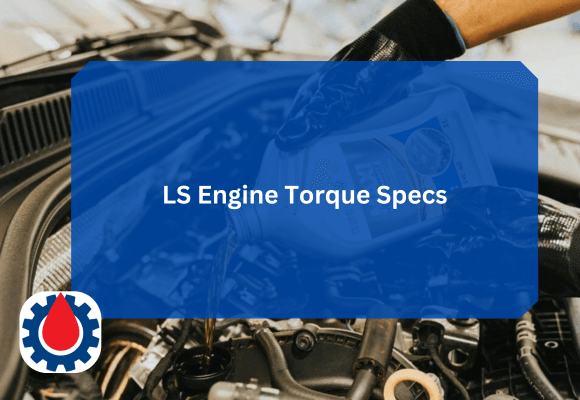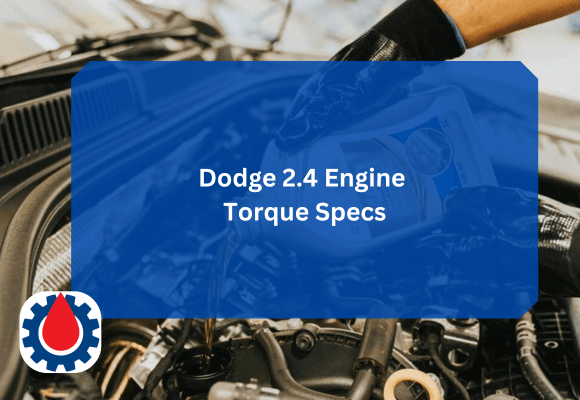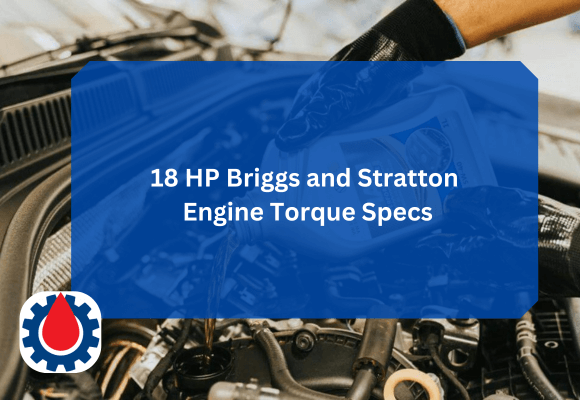Understanding the 8.3 Cummins torque specs is essential. This guide breaks down the key torque specifications, explains why they matter, and offers tips to help you maintain the engine with confidence.
8.3 Cummins Engine Torque Specs
| Component | Torque Specification | Notes |
|---|---|---|
| Cylinder Head Bolts | Step 1: 66 ft-lbsStep 2: 132 ft-lbsStep 3: +90° | Follow center-out sequence; use new bolts. |
| Rocker Lever (Rocker Arm) Bolts | 43 ft-lbs | Ensure even tightening across assembly. |
| Injector Hold-Down Clamp Bolts | 26 ft-lbs | Prevents injector seal leaks. |
| Connecting Rod Bolts | Step 1: 50 ft-lbsStep 2: +60° | Critical for rod/piston reliability. |
| Main Bearing Cap Bolts | Step 1: 95 ft-lbsStep 2: 130 ft-lbs | Maintain bearing crush and oil clearance. |
| Main Bearing Side Bolts (if equipped) | 18 ft-lbs | Used on certain blocks. |
| Flywheel Bolts | 180 ft-lbs | Apply thread locker; essential for safety. |
| Vibration Damper (Harmonic Balancer) – Center Bolt | 250 ft-lbs | Prevents crankshaft vibration issues. |
| Vibration Damper – Outer Bolts (if equipped) | 18 ft-lbs | Tighten evenly. |
| Valve Cover Bolts | 18 ft-lbs | Over-torque can cause oil leaks. |
| Intake Manifold Bolts | 44 ft-lbs | Tighten in alternating pattern. |
| Exhaust Manifold Bolts | 44 ft-lbs | Prevents exhaust leaks and warping. |
| Oil Pan Bolts | 18 ft-lbs | Avoid over-torque to prevent warping. |
| Water Pump Bolts | 18–20 ft-lbs | Tighten in a balanced pattern. |
| Thermostat Housing Bolts | 18 ft-lbs | Prevents coolant leaks. |
| Fuel Injection Pump Gear Nut | 155 ft-lbs | Lock timing correctly before torquing. |
| Camshaft Gear Bolt | 100 ft-lbs | Ensure timing alignment. |
| Rocker Housing Bolts | 44 ft-lbs | Even tightening prevents distortion. |
| Turbocharger Mounting Bolts | 44 ft-lbs | Prevents boost leaks and flange warping. |
| Turbo Oil Feed Line Banjo Bolts | 18 ft-lbs | Avoid crushing copper washers. |
| Turbo Oil Drain Bolts | 18 ft-lbs | Do not over-tighten into aluminum housings. |
| Front Cover Bolts | 18 ft-lbs | Apply thread sealer where required. |
| Rear Main Seal Housing Bolts | 18 ft-lbs | Tighten evenly to avoid leaks. |
| Timing Cover Bolts | 18 ft-lbs | Use sealant where specified. |
| Air Compressor Mounting Bolts (if equipped) | 44 ft-lbs | Applies to mechanical air compressor setups. |
| Power Steering Pump Bolts | 18–22 ft-lbs | Depending on bracket type. |
| Alternator Mount Bolts | 30–35 ft-lbs | Prevents belt misalignment. |
| Starter Mounting Bolts | 55 ft-lbs | Ensures proper engagement. |
Note: The following torque specs represent widely used values for the mechanical 8.3L Cummins engines. Exact specs may vary slightly depending on model year and configuration, so always verify with the correct Cummins service manual for your engine serial number.
Related 5.3 LS Engine Torque Specs(For All Components)
Cylinder Head Bolts
The cylinder head on the 8.3 Cummins requires proper tightening to prevent head gasket failure and maintain compression.
- Step 1: 66 ft-lbs
- Step 2: 132 ft-lbs
- Step 3: Additional 90° turn
Always tighten bolts in the specified criss-cross sequence from the center outward. Using new head bolts is recommended since torque-to-yield bolts stretch during installation.
Rocker Lever (Rocker Arm) Bolts
- Torque: 43 ft-lbs
This ensures proper clamping of the rocker assembly, maintaining correct valve and injector operation.
Injector Hold-Down Clamps
- Torque: 26 ft-lbs
Under-torquing can affect injector sealing, while over-torquing can damage injector bodies.
Connecting Rod Bolts
- Step 1: 50 ft-lbs
- Final Torque: + 60° turn
Rod bolt torque is critical for crankshaft and piston reliability under heavy load.
Main Bearing Bolts
- Step 1: 95 ft-lbs
- Step 2: 130 ft-lbs
- Side Bolts (if equipped): 18 ft-lbs
Proper torque ensures correct bearing crush and lubrication flow.
Related Oil Drain Plug Torque Chart(For ALL Car Models)
Flywheel Bolts
- Torque: 180 ft-lbs
Flywheel loosening can cause catastrophic failure, so applying the correct torque and thread locker is vital.
Valve Cover Bolts
- Torque: 18 ft-lbs
Over-tightening can deform the cover and cause oil leakage.
Intake and Exhaust Manifold Bolts
- Intake Manifold: 44 ft-lbs
- Exhaust Manifold: 44 ft-lbs
These manifolds expand and contract under high heat, so precise torque helps prevent cracking and gasket failure.
Oil Pan Bolts
- Torque: 18 ft-lbs
Tightening too much can warp the oil pan and cause leaks.
Water Pump Bolts
- Torque: 18–20 ft-lbs
Always tighten in small increments and in a star pattern.
Thermostat Housing Bolts
- Torque: 18 ft-lbs
Even torque helps prevent coolant leaks.
Vibration Damper (Harmonic Balancer) Bolts
- Center Bolt: 250 ft-lbs
- Outer Bolts (if equipped): 18 ft-lbs
The damper is essential for preventing crankshaft vibration, so proper torque is crucial.
Related Cummins Engine Oil Filters(Top 3 Best 2025)
Tips for Torquing the 8.3 Cummins Correctly
1. Use a calibrated torque wrench
A torque wrench that is out of calibration can under- or over-tighten bolts. Check calibration once per year if you work on engines regularly.
2. Clean threads before installation
Dirty or oily threads can alter torque readings. Clean all fasteners with brake cleaner and compressed air.
3. Use proper lubrication
Where Cummins specifies oil or anti-seize, apply the correct lubricant to ensure accurate torque values.
4. Follow tightening sequences
Head bolts, main caps, and manifolds must be tightened in proper sequence to avoid warping or misalignment.
5. Replace torque-to-yield bolts
Some bolts (like head bolts) stretch during installation and must be replaced rather than reused.
Related
Why Torque Specs Matter on the 8.3 Cummins
Torque specifications ensure that engine fasteners are tightened to the exact clamping force intended by Cummins. Too loose, and components may leak, vibrate, or fail prematurely.
Too tight, and bolts stretch, weaken, or distort engine parts such as the block, head, or bearings.
The 8.3 Cummins is built with precision tolerances, so following torque specs is not optional, it directly affects reliability, longevity, and performance.
Critical components such as the cylinder head, main bearings, rod bearings, injectors, and rocker assemblies must all be tightened using the correct sequence and torque levels. Using a properly calibrated torque wrench and following manufacturer procedures helps avoid costly mistakes during maintenance or rebuilds.
Common Mistakes to Avoid
Over-torquing
This can cause cracked housings, stretched bolts, and warped gaskets, leading to expensive repairs.
Mixing bolt sizes
Some engines use different-length bolts in similar positions. Always match bolts to original locations.
Ignoring angle torque
On the 8.3 Cummins, many bolts require a final torque-angle turn. Skipping this step can reduce clamping force by up to 30%.
Final Thoughts
The 8.3 Cummins engine is built to handle tough, high-load environments, but its longevity depends heavily on proper torque application during maintenance and repair.
Whether you’re working on a head gasket, replacing injectors, resealing the oil pan, or doing a full rebuild, following torque specs precisely ensures the engine delivers the performance and reliability it was engineered for. With the right tools, proper procedure, and attention to detail, you can keep your 8.3 Cummins running strong for thousands of hours or miles.




